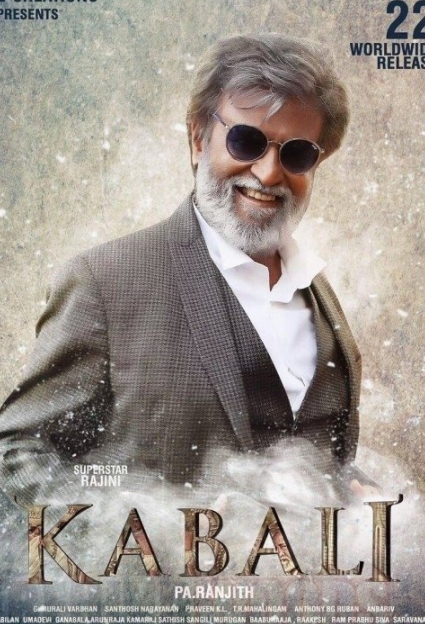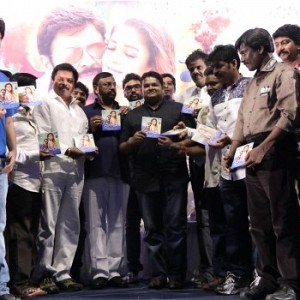Why is Kabali one of the best Rajini films in the last two decades?
Home > Visitor Columns
Behindwoods.com isn't responsible for the views expressed by the visitor in this column. The visitor claims that this column is his/her own. If the column infringes any copyrights that you hold, please email us at columns@behindwoods.com.
This note is restricted for moviegoers who have seen Kabali at least once in theatres, as there are spoilers which can ruin your goosebumps experience.
Reason 1- Unattempted Genre for Rajini in recent years
One of the misused and unused words of Indian cinema. There is a very important concept in marketing a product called Segmentation, Targeting and positioning which define who is the product targeted at and marketed against those segments for effective results. And that is the reason movies were classified into genres expecting people who like those respective genres will go and watch the film. But Indian movies do not follow this pattern whatsoever, our film producers want to make big bucks and do not respect genre classification (not their fault either) and end up marketing this to everyone (This will be a separate discussion by itself)
Kabali falls into a genre of Emotional Drama set against the backdrop of Malaysian gangsters, please note this is not a crime drama like Godfather the film focuses only on the emotional side of the aged gangster. Drama is a genre that focusses deep into the realistic struggles of Characters shown in the movie and there is ample opportunity for actors to stretch into their roles in a Drama genre. This Genre can be attempted only by actors who are confident of their expressiveness and acting skills.
Let us see what are the Genres of other Rajini films in this decade:
• Baba (2002) - Fantasy action which aimed to uncover the spiritual side of Rajini and the troubles he gets into because of the magical powers
• Chandramukhi (2005) - Supernatural thriller on winning over the evil spirits through psychiatric techniques
• Sivaji (2007) - Social Action on Sivaji’s battle with the system and corruption to achieve his dreams
• Enthiran (2010) - Sci-fi Thriller on a scientist, his creation and the consequences of robot’s love
• Kochadayaan (2014) - Historical fiction on revenge by a warrior for the injustice done to his father
• Lingaa (2014) - Period action film focused on efforts to build a dam and saving it from a politician
So clearly Rajini has never given a drama (with an exception of his cameo appearance in Kuselan) in the recent past and his full-fledged drama film goes back to ‘Thalapathi’ in 1991 where he collaborated with the Mani Ratnam (touted to be the master of this genre). If you clearly notice that Drama as a genre does not encourage fast paced screenplays or the chessboard moves that happen in other movies making it boring for the audience who walk into the movie halls with expectations of an action film. If Kabali went into a direction of how Kabali resumed power from Gang 43 in Malaysia then the expectations of the audience could have been satisfied easily, but the film attempts at what did Kabali go through after his return from jail.
Reason 2- Three Dimensional Characters
The drama genre produces three-dimensional characters unlike the other genres where the protagonist is only subjected to a very few emotions for example Rajini in Sivaji has to fight against Adhiseshan and never deviates from his mission making it one-dimensional for an actor, whereas Kabali who comes out of the prison is confused, haunted, afraid, emotional which makes his character three-dimensional and not restricted to delivering punch dialogues at the villains and finishing them once for all.
Kabali has spent 25 years in Jail, what was he thinking when he gets released? Does he decide to go revenge and immediately finish off everybody ? Does he want to get back the power of KL Town? Does he want to fight for justice for his people? And the answer is he does not know and has no plans, all that he knows is that he has to be physically strong to face the outside world and gets those pull-ups. The decision to attack Seeni was impulsive and to make a statement, however he does not continue hatching plans to destroy Gang 43. Kabali then suffers through the guilt and confused on where to start and what to do? The decision to meet Loga is also impulsive as he sees Meena getting drugs from a dealer, it’s only when he gets his family back he decides on the next steps he has to make to protect his family and finish off the gangs. Unlike other Rajini movies here Kabali cries, gets smacked by his wife, gets attacked by others, falls prey for bluffs, apologizes for his mistakes and does not make fool proof executions which makes Kabali, the character very real. Yogi although portrays herself as a very strong tomboy, fear starts creeping her up when she is protecting her father. Jeeva & Tiger represent the modern day youth who do not believe in ideologies but believe in fanatics to shift between gangs on loyalty. Marthandam looks for opportunities to be part of the gang that has the upper hand. Kalayarasan has his motive clear to revenge for his father’s death and quickly shifts base. And finally Radhika Apte as Kumudhavalli explains the power of a woman to shape a man’s life and overcome his fears, confusions
Reason 3- Nativity and Social Issues backdrop
There has never been a Tamil movie which talked about the issues faced in neighbouring countries. A filmmaker’s responsibility is to talk about social issues and make people think about it. Ranjith’s research and attempt at portraying Malaysia is classic making every Malaysian Tamilian to relate to the film. Kabali as a character is not derived from one particular person but a mix of various real life characters including Bentong Kali, Varadaraja Mudhaliar and many other gangsters. Ranjith dwells into a lot of social issues which are common across geographies, that has never been attempted in Tamil cinema
1.About minority group which is suppressed by ethnic people resembling the issues faced by Indians in Australia, Tamils in Srilanka, Malaysia and many other examples
2. Drug issues faced by youngsters and people who lose track of their lives
3.Wage issues faced by migrant workers and their struggle to get their rights back
The best part is that Ranjith does not give solutions for these issues and states that the problems still exist for us to find a solution.
annamalai.june@gmail.com
Please send your column to columns@behindwoods.com.
FACEBOOK COMMENTS
OTHER LATEST VISITOR COLUMNS
RELATED NEWS
- Superstar Rajinikanth's Kabali still reigns!
- ''Occupancy of Theri and Vedalam were better than Kabali''
- Kabali sets a new all-time Chennai city record!
- Kabali special show for the underprivileged
- ‘Neruppu Da’ No. 1 on Top 10 charts for 7th consecutive week.
- "AFTER KABALI, I HAVE ASKED PA.RANJITH TO DO ANOTHER FILM FOR ME''
- ‘‘Kabali has collected 326 crores’’, says producer Thanu
- Amitabh Bachchan to remake Kabali in Hindi?
- ‘‘Rajinikanth still holds the audience enthralled’’ says this veteran actress!
- Vairamuthu clarifies on his controversial comment about Kabali
- Superstar thanks the audience for Kabali success
- Record breaking collection in Chennai for Kabali
- Dhanush talks about Kabali
- TN Box Office: Kabali's Record Day 1 Performance
- Kabali's first day Chennai city collection is here!
RELATED LINKS
- Kabali - Veera Thurandhara Song
- Kabali - Rajini's charm!!
- Kabali - Agree not to disagree
- Kabali intro song video - Ulagam Oruvanukka
- Kabali - The King of BO - Here is the VERDICT !
- Kabali, game changer for Rajini and Ranjith
- Kabali - Maya Nadhi Song
- Kabali success meet Photos | TOP 10 PHOTOS OF THE WEEK (JULY 23 - JULY 29) - Slideshow
- ''AFTER KABALI, I HAVE ASKED PA.RANJITH TO DO ANOTHER FILM FOR ME'' | TOP 10 NEWS OF THE WEEK (JULY 24 - JULY 30) - Slideshow
- ‘‘KABALI HAS COLLECTED 326 CRORES’’, SAYS PRODUCER THANU | TOP 10 NEWS OF THE WEEK (JULY 24 - JULY 30) - Slideshow
- Kabali success meet
- "Rajini sir stopped me, When I took the Razor knife" - Kabali Hair Stylist Luxe Sudhakar
- Maya Nadhi | Kabali | Synergy-The Band | D-music
- Kabali is a great film!
- Kabali-a one time watch









